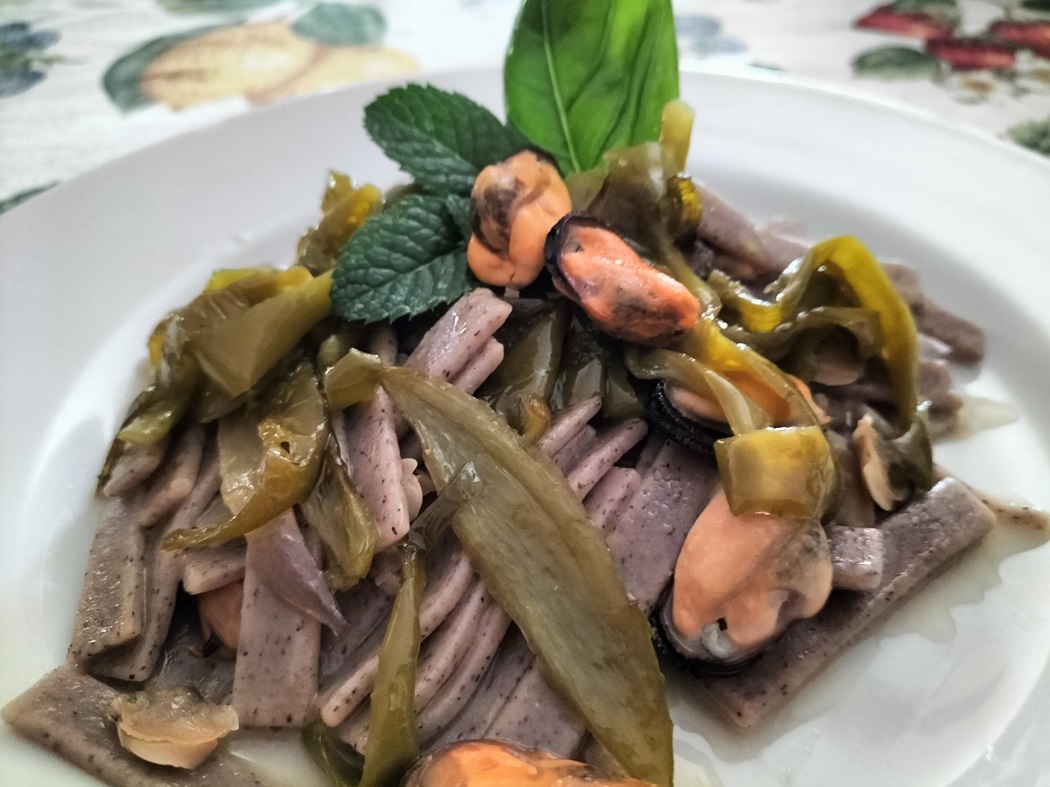Maenza, a beautiful village in the Lepini Mountains is famous for its castle but above all for a delicious fruit of the earth celebrated every year with the Cherry Festival of Maenza.
When the first settlement was made in the Middle Ages, cherry trees were already in the area. An important historical testimony of the antiquity of this product "prince of Maenza" is a valuable medieval fresco, known as "Madonna delle Ceràse" (cherries in the dialect of Maentino), today preserved in the Church of Santa Maria Assunta.
In the fresco is depicted a Virgin enthroned with the Child sitting on her legs. The Madonna wears a red cloak and puts her feet on a pillow and the Child takes from her hands a bunch of cherries, symbolizing the blood of Christ poured on the Cross.
The work is a portion detached from an ancient fresco by an unknown artist dating back to the fifteenth century that was found in the ancient church of San Giacomo in 1975. The cultivation of the cherry in Maenza dates back to ancient times. Once it was a common custom that with the proceeds of the sale of cherries you bought the dowry of the girls.
For many centuries cherry cultivation did not have much productive and commercial development. But in 2009 a group of local producers decided to found the "La Cirasa" Association to enter new markets, start new cultivation techniques and plant new varieties. This has allowed local cherry-growing to achieve excellence and a productive and commercial growth.
Today in Maenza different varieties of cherry are grown. Among the autochthonous (native) ones there are: the "Prumoteche", with an early fruit and a less intense flavour, the "Patrea" (both red and black) fruit with a stronger taste and rich in phosphorus, the "Toste" and the "Ciràse walnuts" from the generally larger and harder fruit with a dark red color. Finally there are the "Marascoli" (sour cherries), which tend to be more sour, with which jams are made which are used to fill the traditional tarts or to make Rattafia liquor. Other varieties are the "Praticane" and the "Pomponie".
Among the non-native varieties, the result of experimentation are: the "Durone Nero II di Vignola" among the oldest Italian species and the "Isabella", the "Giorgia", the "Adriana" and the "Ferrovia".
The 'red gold' of the delicious typical Maentino product is celebrated since 1954 with a festival in its honour. Except for a long interruption of 14 years (from 1963 to 1977), the Maenza Cherry Festival is held regularly every year on the first weekend of June.
Since the first edition, the festival has been a success, with the square and the whole country crowded with allegorical floats, singing, folk songs and dances that have involved many of the inhabitants of the village.
The programme of the festival is a genuine and winning recipe that attracts many tourists and the curious from all over the region year after year: distribution of cherries by families in the lower part of the country, parade of wagons, performances of the band, folk groups and evening music.
In recent years the festival has been enriched by art exhibitions and tastings of local products and typical dishes and numerous cultural events.
In the early years (until 1963) the local poets and the master of the musical band dedicated a musical composition to the event every year. The best known, now considered a true hymn of the festival (being the first song), is "Evviva le Ciraselle" of 1954 (the debut year of the festival) written and music by Giovanni Bizzarri, then master of the band.
Maenza is one of the two municipalities of Lazio (the other is Poggio Nativo near Rieti) that are part of the "Città delle Ciliegie" (Towns of Cherries) National Association, founded in 2003 to develop and promote the entire sector and to enhance the traditionality of territories.
The cherries of some Maentine companies have won the Special Prize at the "Ciliegie d'Italia" National Competition which since 1999 selects the best national productions.








Follow us